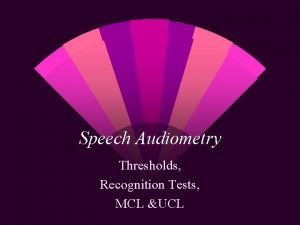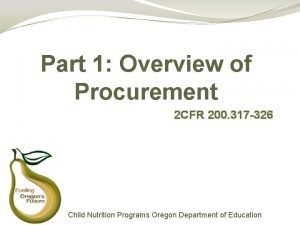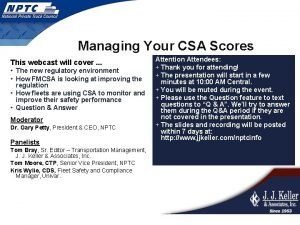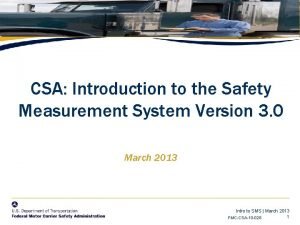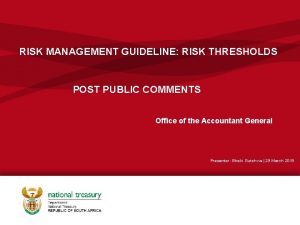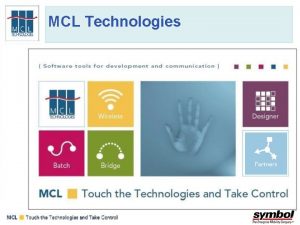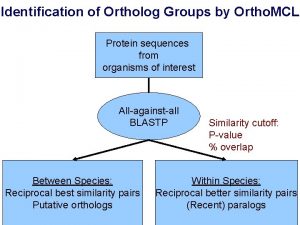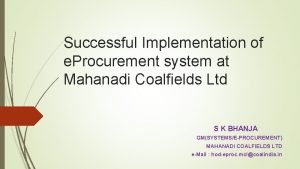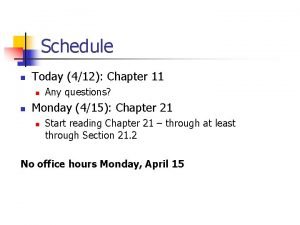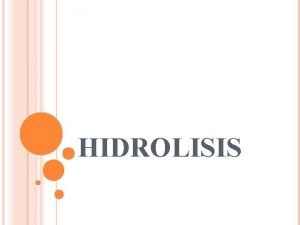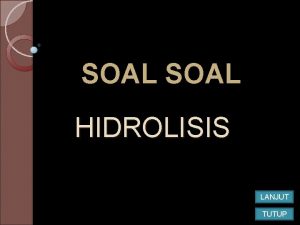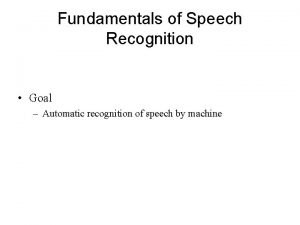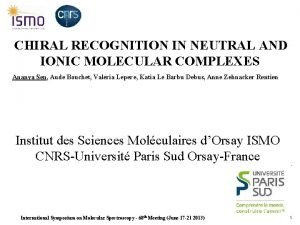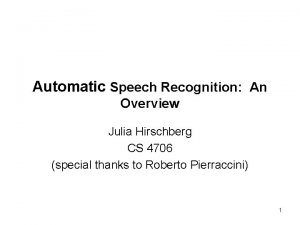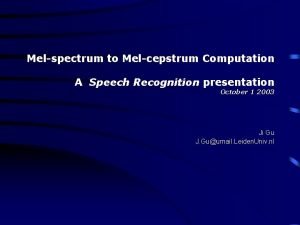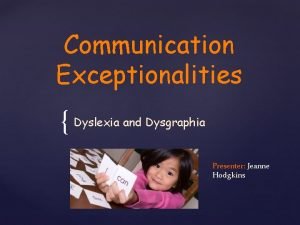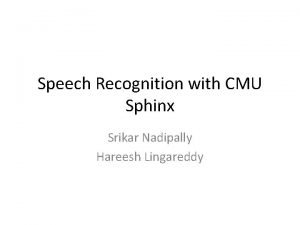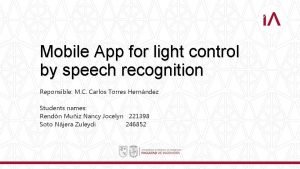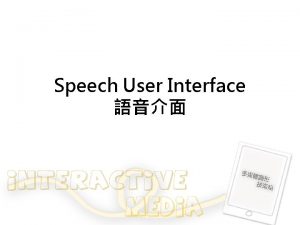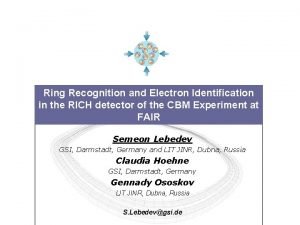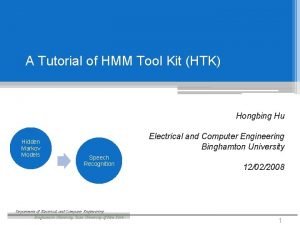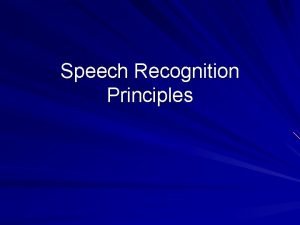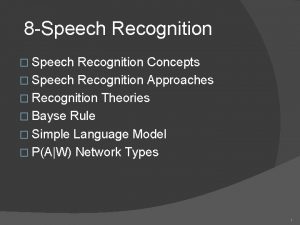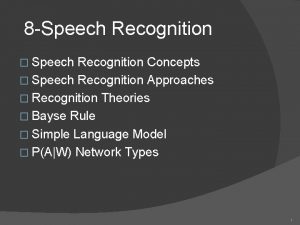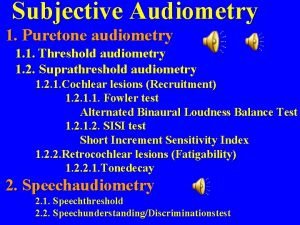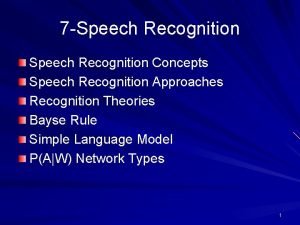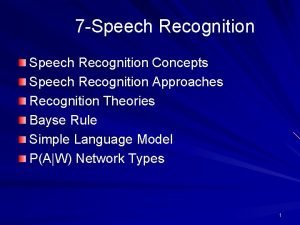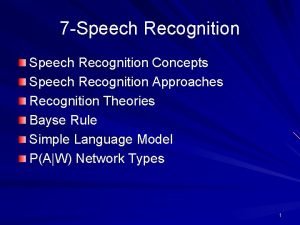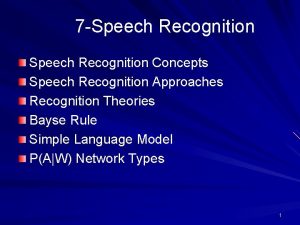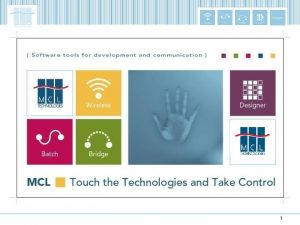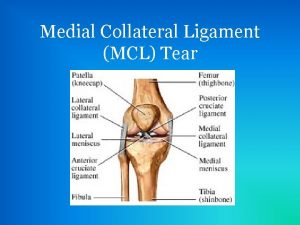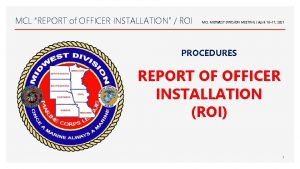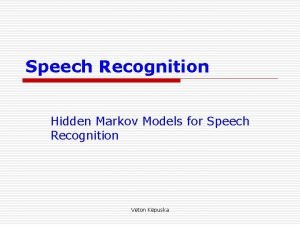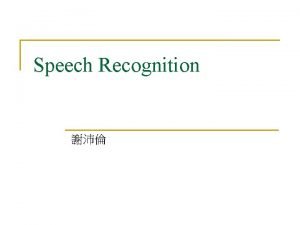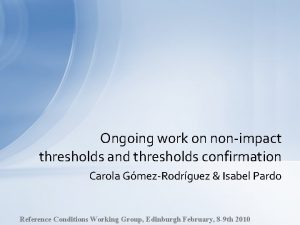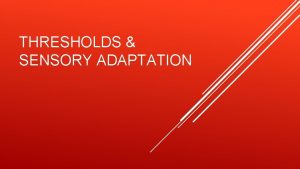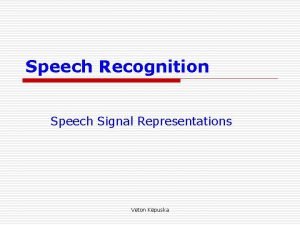Speech Audiometry Thresholds Recognition Tests MCL UCL Testing






































- Slides: 38

Speech Audiometry Thresholds, Recognition Tests, MCL &UCL

Testing with Recorded Speech Ø 1000 Hz Calibration tone provided on recording Ø Balance calibration tone on VU meter at 0

Live Voice Testing: Ø Controlled Ø Adjust Vocal Effort, microphone sensitivity Ø to have the speech balanced at 0 d. B on VU meter

Thresholds for Speech: Ø Speech Detection Threshold: lowest level at which the listener can tell that something is there (when the signal happens to be speech). Ø Speech Recognition Threshold: lowest level at which the listener can actual identify what the speech stimulus is.

SRT Stimuli: Spondees Ø 2 -syllable Ø can words with equal stress be divided into two monosyllables Ø e. g. , hotdog, baseball, whitewash, mousetrap, birthday, eardrum. . .

Why spondees? Ø because their intelligibility curves rise from near chance to 100% performance within a few decibels. Ø This provides a much more accurate threshold.

SRT Methods ASHA: Ø Instruct Ø Familiarize (16 words) Ø Find Starting Level Ø Begin Descending procedure Ø Thresh = Start Level # C + Corr. Factor Adaptive Ø Instruct Ø Familiarize Ø Bracket (2 -4 wds/level) Ø Thresh = lowest level where you get at least 50% correctly repeated.

The SRT should agree with the PTA Ø (-8 to +6 d. B of best threshold at these frequencies). Ø This way we have a double-check on results.

Exception for steeply-sloped high frequency losses. SRT will be better than PTA Ø In this case use Fletcher average: 500 Hz + 1000 Hz / 2. Ø

Masking for SRT's: Ø IF SRT - IA > best BC THRESH in NTE. Ø WHITE or PINK NOISE Ø STARTING LEVEL=SRTTE – 35 +ABGNTE

Long Term Spectrum of Speech And the variance around it.

Bone Conduction SRT's: Ø useful in children Ø useful in malingerers.

Masking for SRT Ø If SRT - IA > best BC Thresh NTE Ø Put in at least: STARTING LEVEL=SRTTE – 35 +ABGNTE But no more than: OVERMASK = EMNTE-IA> Best BC Thresh TE

Most Comfortable Loudness Level Instructions important: you can strongly influence how a person responds. Ø "I am going to continue talking to you as I make my voice louder and softer. I will keep asking you to tell me whether my voice is too soft, too loud or comfortably loud. " Ø Do a number of sweeps in level. Ø normally between 40 and 55 d. B above SRT Ø

Uncomfortable Loudness Level Begin at MCL, raise level as you continue to talk. Ø "I am now going to ask you to tell me how my voice sounds to you as I make it louder. Please tell me if the level is comfortable, a little loud, or uncomfortably loud. ” Ø Uncomfortable = loud enough so you would not want to listen to my voice for a long time. Ø

Range of Comfortable Loudness Ø (Or the Dynamic Range for Speech) Ø = UCL – SRT Ø Normally 100 d. B or greater Ø Unchanged in conductive losses Ø Can be much smaller in sensorineural hearing loss

Word Recognition Testing Open set-client can respond with any word he/she can think of. Ø Closed set-response options are provided for the client (multiple choice test). Ø Free response-client is free to respond or not. Ø Forced Response-client must say something. Ø Ø Ø [Forced choice = closed set forced response. ]

Phonetically Balanced Word Lists Ø selection of a group of words so that each phoneme appears with the same frequency it has in the normal lexicon. Based on Thorndike-Lorge lists of words and word frequencies. Ø So-called PB word lists-- CID W-22 Lists Ø Four lists of 50 words each.

CNC Word Lists Ø Consonant-Nucleus-Consonant Ø Phonemically words balanced Ø Four 50 -item lists: the NU-6 Word Lists

Alternative Speech Choices Ø High Frequency Word Lists • Gardner’s Hi Frequency Word Lists • California Consonant Test Ø Nonsense Syllable Lists • The Nonsense Syllable Test (NST) Ø Sentence Tests • • The Synthetic Sentence Identification (SSI) test Speech Perception in Noise (SPIN) test Connected Speech Test (CST) The Hearing In Noise Test (HINT)

Children’s Tests Word Intelligibility by Picture Identification (WIPI) test – six pictures to choose from. Ø Northwestern University Children’s Perception of Speech (NUCHIPS) test – four pictures to choose from Ø Monosyllable-Spondee-Trochee test – distinguishing word shapes, not identifying particular words; used in cochlear implant cases. Ø

WIPI Sample Item

NU-CHIPS Sample Item

Administration: once you've chosen materials Ø transducer: AC, BC, or sound field. Ø level: at some SL (40)--may be specified by test. Ø response: repeat, write, or mark on list. Ø competing noise: what, how loud. Ø masking: calculate (Test Level - IA) - BC nte

Adaptive Testing Ø Finding a threshold, not a % score Ø Typically in presence of competing noise Ø Measure has low variance Ø Not yet common in clinical practice • (although we will talk about the HINT soon)

Performance-Intensity Functions Ø PI function: word recognition scores obtained at a range of stimulus levels. Ø Curve reaches a peak (Pbmax), and then Ø Either remains high (normal), or Ø Drops at higher levels (Rollover) Ø Rollover Index = (PBmax – Pbmin)/PBmax


Rollover Indices for the preceding examples Ø Normal: (100 - 100) / 100 = 0. 0 Ø Rollover: (44 - 20) / 44 = 0. 54 Ø Cochlear: (80 - 70)/80 = 0. 125 Ø Rollover Indices of 0. 45 or greater indicate a neural (VIIIth nerve) problem.

Cross Hearing & the Need to Mask Ø If Word level (HL)TE – IA > Best BCNTE Use Pink (Speech) Noise, or white noise Ø Suggested Levels: EM = PBHL TE – IA + ABGNTE + 20 d. B Ø PB Test Level 40 d. B HL 60 d. B HL 80 d. B HL Masker Level --40 d. B EM 60 d. B EM

Reliability of Word Recognition Scores Ø Range of possible scores upon retest Thornton & Raffin (1978) # of Items Initial Score 90 100 50 25 10 81 -96 76 -98 72 -100 50 37 -63 32 -68 28 -76 10 -90 20 11 -32 8 -36 4 -44 0 -60


NU-6 Words Ordered by Difficulty Ø Present 10 words- stop if 0 or 1 error Ø If >1 error, present next 15 words Ø If < 3 errors (out of 25), stop Ø If > 3 errors administer all 50 words Hurley & Sells, 2003

Interpreting Word Recognition Scores Score: General Word Recognition Ability: 90 to 100 Within Normal Limits 75 to 90 Slight Difficulty 60 to 75 Moderate Difficulty 50 to 60 Poor < 50 Very poor

Expected PB max by Hearing Loss Dubno, J. et al. JSHR 1995

Abnormally Low Word Recognition for HL 1 st % Correct Score 2 nd % Score PTA (d. B HL) SPRINT: Speech Recognition Interpretation Chart © by Linda M. Thibodeau, 1999

95 % W C or on d Re fide co nce gn L iti im on it Sc s fo or r e 1 st % Correct Score 2 nd % Score PTA (d. B HL) SPRINT: Speech Recognition Interpretation Chart © by Linda M. Thibodeau, 1999

Predicting WRS from the audiogram: The AI Ø The Articulation Index Ø Audibility Index Ø “Count the dot” audiogram Ø If word recognition is poorer than prediction: neural hearing loss or central disorder.

Counting Dots: (Mueller & Killion) Ø Each dot = 1% Ø # of dots below HL line on audiogram = % correct identification for speech.
 Otosclerosis flamingo pink blush
Otosclerosis flamingo pink blush Mcl ucl
Mcl ucl Ace different tests iq tests still
Ace different tests iq tests still 2 cfr 200 procurement thresholds
2 cfr 200 procurement thresholds Csa basic thresholds
Csa basic thresholds Five thresholds
Five thresholds Csa percentiles
Csa percentiles Establishing risk thresholds
Establishing risk thresholds Mcl technologies
Mcl technologies Marine corps league red blazer
Marine corps league red blazer Mcl designer
Mcl designer Ortho mcl
Ortho mcl Mcl e procurement
Mcl e procurement Half reaction
Half reaction Campuran yang bersifat hidrolisis adalah
Campuran yang bersifat hidrolisis adalah Dalam larutan mcl 0 1 m
Dalam larutan mcl 0 1 m Loss recognition testing fas 60
Loss recognition testing fas 60 Kinect for windows speech recognition language pack
Kinect for windows speech recognition language pack Fundamentals of speech recognition
Fundamentals of speech recognition Deep learning speech recognition
Deep learning speech recognition Aude leperre
Aude leperre Julia speech recognition
Julia speech recognition Melspectrum
Melspectrum How dyslexic see words
How dyslexic see words Cmu speech recognition
Cmu speech recognition Speech recognition
Speech recognition Speech recognition app inventor
Speech recognition app inventor Dragon speech recognition
Dragon speech recognition Electron speech recognition
Electron speech recognition Htk tutorial
Htk tutorial Domain testing example
Domain testing example Motivational overview of logic based testing
Motivational overview of logic based testing Data flow testing strategies in software testing
Data flow testing strategies in software testing Positive and negative testing
Positive and negative testing Static testing and dynamic testing
Static testing and dynamic testing Globalization testing example
Globalization testing example Neighborhood integration testing
Neighborhood integration testing Cause effect graph for triangle problem
Cause effect graph for triangle problem Control structure testing in software testing
Control structure testing in software testing

